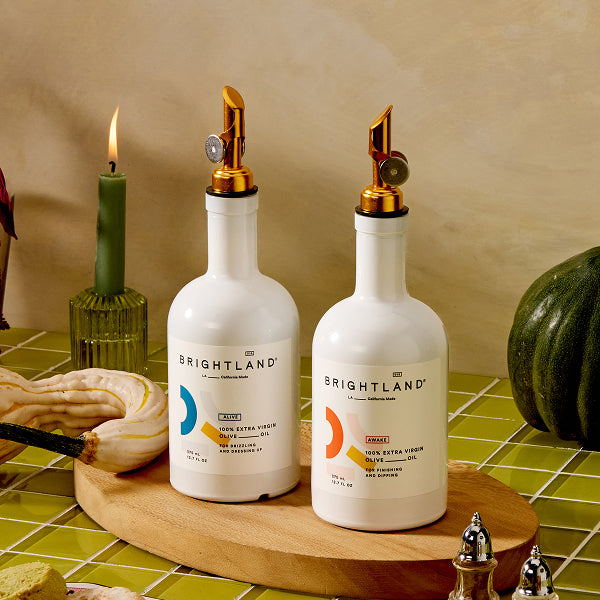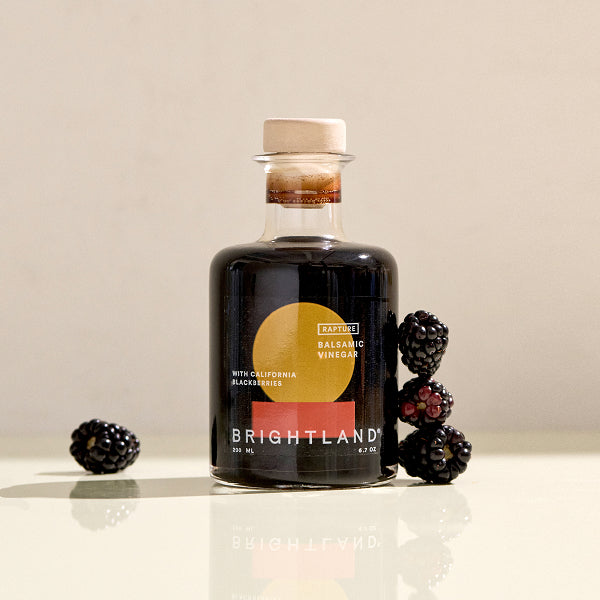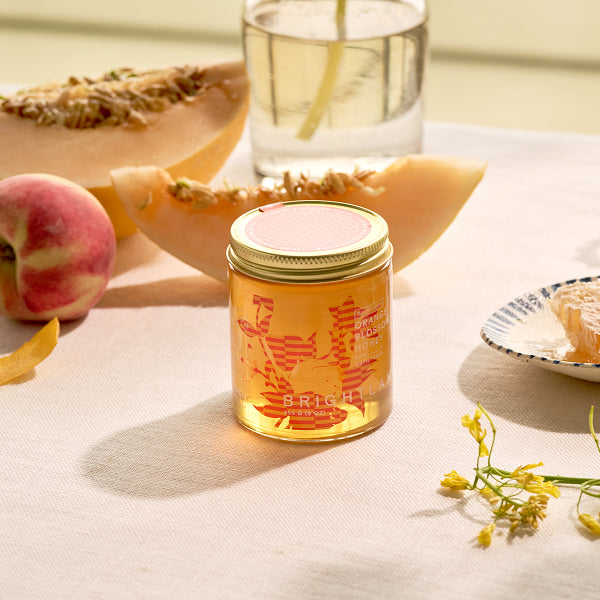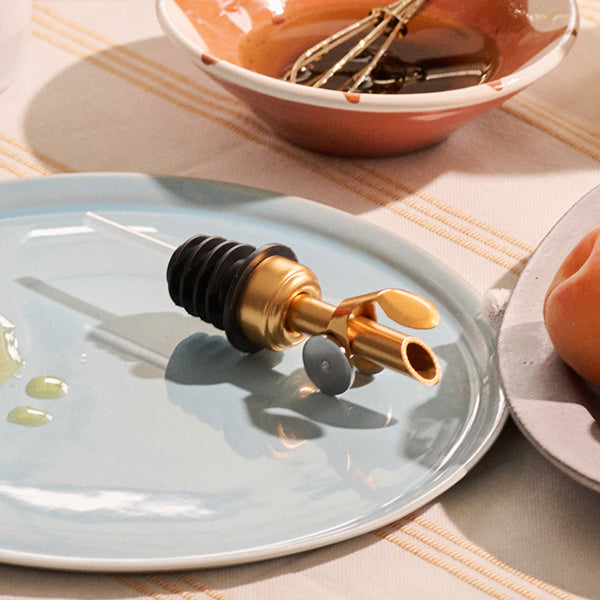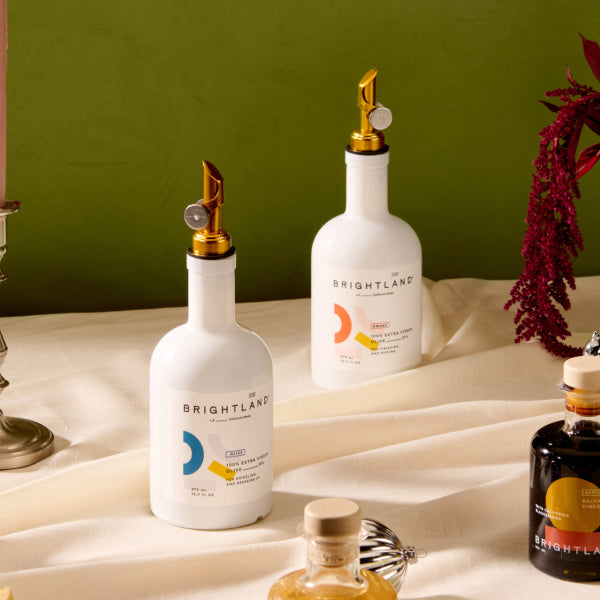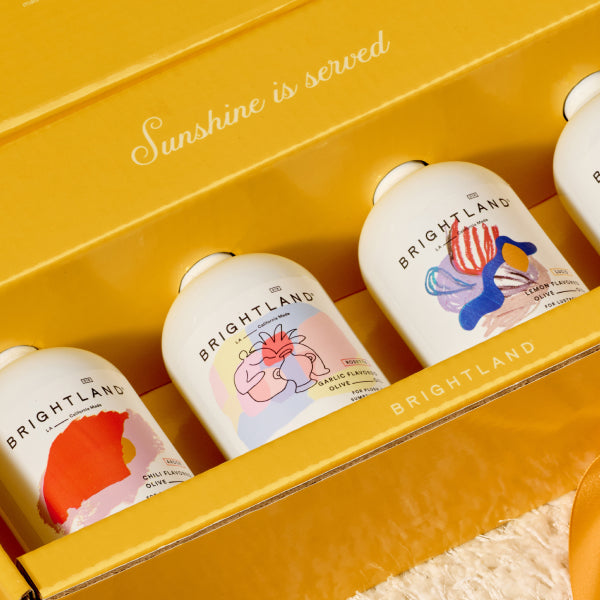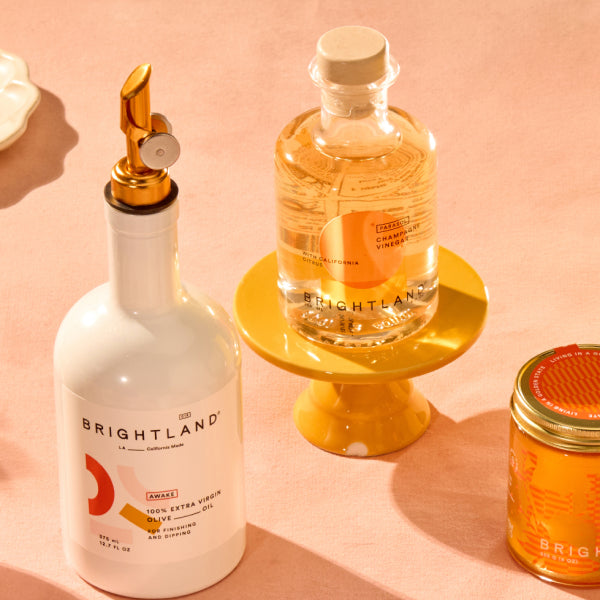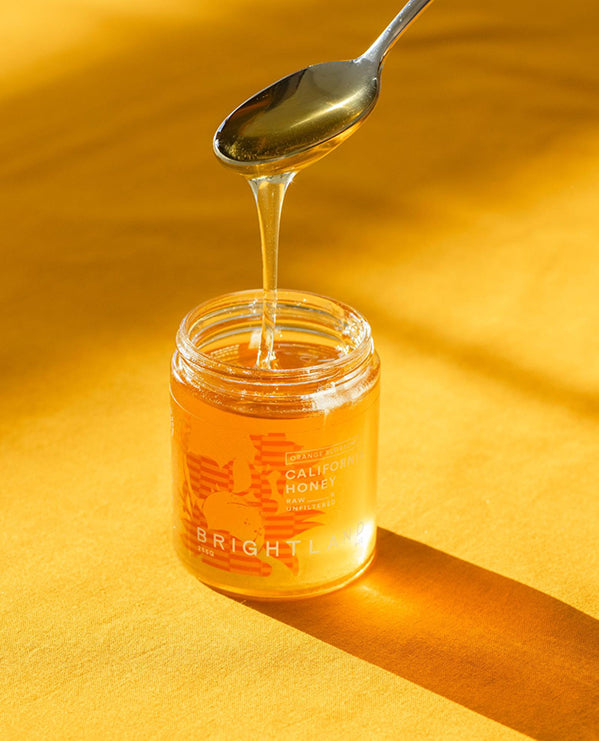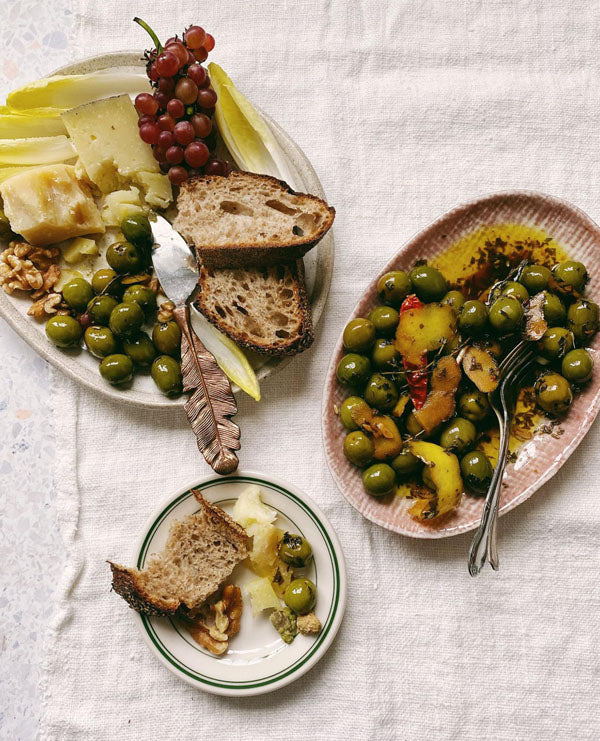If you have tried more than one type of olive oil in your life, then you have probably noticed that olive oil comes in a variety of colors. But interpreting olive oil color is not as easy as you might think, and some persistent myths have made it even more difficult to figure out exactly what olive oil color means. In this guide, we will be answering three common questions about olive oil color to help dispel any confusion.
[close type="rte"][open type="images" small="true"]
Does Olive Oil Color Indicate Quality?
While this would be extremely convenient if it were true, the color of an olive oil is not a reliable indicator of the quality of an olive oil. While you may have heard that darker, greener olive oils are higher quality (or vice versa), the color of the olive oil and the darkness of the hue simply is not linked to the quality of the oil in a reliable way. Professional olive oil tasters use special blue glasses to block the color of the olive oil for this same reason: color is not an indicator of quality.
This myth probably came from the fact that a refined, highly processed olive oil will be lighter in color than it was before it was refined (i.e., when it was still extra virgin). The key here is that these comparisons must be made from the exact same batch of olive oil. It is not applicable when comparing two olive oils made from different types of olives, or even two different batches of the same type of olive oil. In other words, unrefined extra virgin olive oil made from olive type A can be the exact same shade and color as refined olive oil made from olive type B.
What Does Olive Oil Color Mean?
While olive oil color is not reliably associated with quality, color does tell you something about olive oil. For instance, greener oils generally tend to be more robust and grassy in flavor, while golden oils tend to have a lighter, buttery flavor.
The color of the olive oil can also indicate what time of the season the olives were harvested. Olive fruit starts out green and ripens into a black-purple color over time. Olives picked earlier in the season, while the fruit is still green, will also produce a greener oil. Olives picked later in the season tend to result in a lighter, golden oil. This is why two olive oils made from the same type of olives grown in the same place can have two different colors.
[close type="rte"][open type="images" count="1"]
The color of olive oil is also impacted by the climate the olives were grown in. Say you have two different bottles of oil made from the exact same variety of olives harvested at the exact same time — but one bottle came from olives in France and one came from olives in Spain, or two different regions of Italy. Due to the variation in climate and weather, the resulting olive oils will almost certainly be two different colors even though they are otherwise identical.
Can Olive Oil Color Change Over Time?
If you have had a bottle of olive oil for a while, and it no longer seems to be the same color it was when you first purchased it, this difference is not just in your head. Exposure to heat, light and oxygen will cause the compounds in the olive oil to oxidize and degrade over time, which will certainly change the color of the olive oil.
To help slow down this process, you should store olive oil in a cool, dry place such as the pantry — not on your kitchen window sill or on the counter right next to the stove. Ideally, you should buy olive oil in opaque bottles, such as those that Brightland uses, to further protect the olive oil from harmful UV rays. You should also store it in an airtight container to prevent exposure to oxygen. We know that open-air, pour-top oil bottles made from clear glass are convenient, but they are basically a perfect combination of factors that will cause your olive oil to degrade and the color to lighten.
[close type="rte"][open type="images" small="true"]
If you would like to sample olive oils of all different colors, then check out Brightland’s selection of olive oils. We offer several different kinds of extra virgin olive oil as well as flavored olive oils, including a lemon olive oil and a chili infused olive oil.
[close type="rte"]
